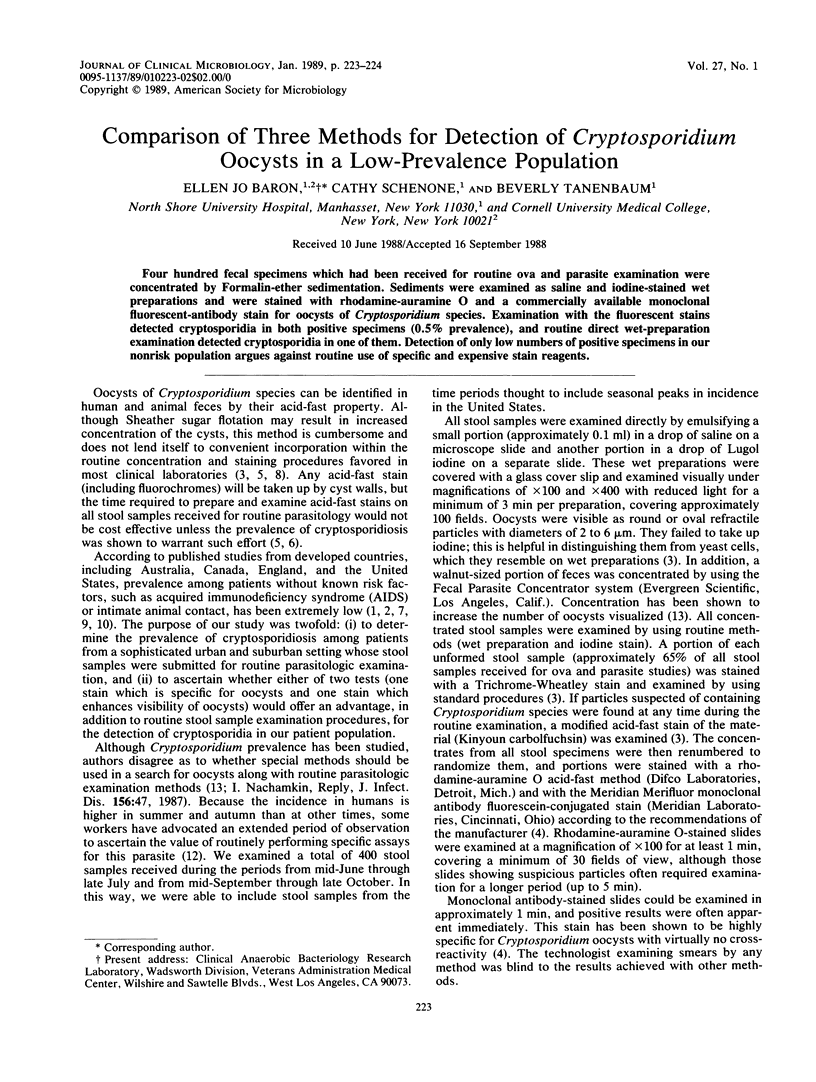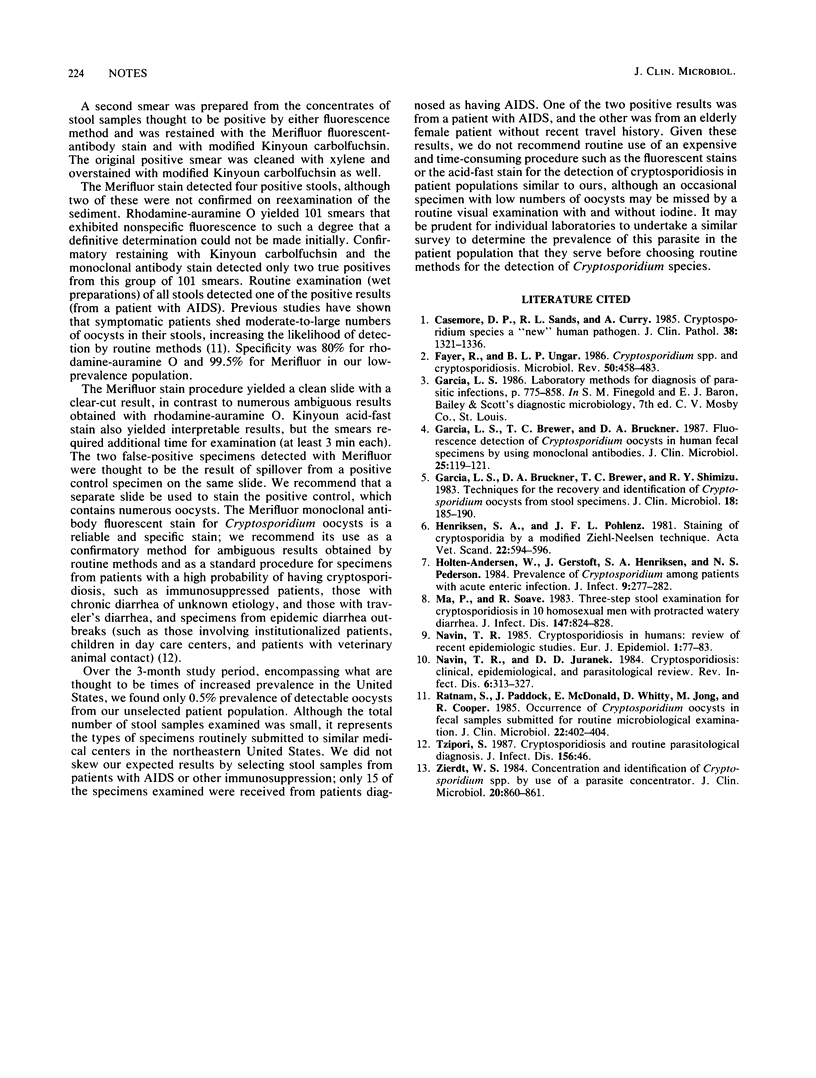Abstract
Four hundred fecal specimens which had been received for routine ova and parasite examination were concentrated by Formalin-ether sedimentation. Sediments were examined as saline and iodine-stained wet preparations and were stained with rhodamine-auramine O and a commercially available monoclonal fluorescent-antibody stain for oocysts of Cryptosporidium species. Examination with the fluorescent stains detected cryptosporidia in both positive specimens (0.5% prevalence), and routine direct wet-preparation examination detected cryptosporidia in one of them. Detection of only low numbers of positive specimens in our nonrisk population argues against routine use of specific and expensive stain reagents.
Full text
PDF

Selected References
These references are in PubMed. This may not be the complete list of references from this article.
- Casemore D. P., Sands R. L., Curry A. Cryptosporidium species a "new" human pathogen. J Clin Pathol. 1985 Dec;38(12):1321–1336. doi: 10.1136/jcp.38.12.1321. [DOI] [PMC free article] [PubMed] [Google Scholar]
- Fayer R., Ungar B. L. Cryptosporidium spp. and cryptosporidiosis. Microbiol Rev. 1986 Dec;50(4):458–483. doi: 10.1128/mr.50.4.458-483.1986. [DOI] [PMC free article] [PubMed] [Google Scholar]
- Garcia L. S., Brewer T. C., Bruckner D. A. Fluorescence detection of Cryptosporidium oocysts in human fecal specimens by using monoclonal antibodies. J Clin Microbiol. 1987 Jan;25(1):119–121. doi: 10.1128/jcm.25.1.119-121.1987. [DOI] [PMC free article] [PubMed] [Google Scholar]
- Garcia L. S., Bruckner D. A., Brewer T. C., Shimizu R. Y. Techniques for the recovery and identification of Cryptosporidium oocysts from stool specimens. J Clin Microbiol. 1983 Jul;18(1):185–190. doi: 10.1128/jcm.18.1.185-190.1983. [DOI] [PMC free article] [PubMed] [Google Scholar]
- Henriksen S. A., Pohlenz J. F. Staining of cryptosporidia by a modified Ziehl-Neelsen technique. Acta Vet Scand. 1981;22(3-4):594–596. doi: 10.1186/BF03548684. [DOI] [PMC free article] [PubMed] [Google Scholar]
- Holten-Andersen W., Gerstoft J., Henriksen S. A., Pedersen N. S. Prevalence of Cryptosporidium among patients with acute enteric infection. J Infect. 1984 Nov;9(3):277–282. doi: 10.1016/s0163-4453(84)90618-2. [DOI] [PubMed] [Google Scholar]
- Ma P., Soave R. Three-step stool examination for cryptosporidiosis in 10 homosexual men with protracted watery diarrhea. J Infect Dis. 1983 May;147(5):824–828. doi: 10.1093/infdis/147.5.824. [DOI] [PubMed] [Google Scholar]
- Navin T. R. Cryptosporidiosis in humans: review of recent epidemiologic studies. Eur J Epidemiol. 1985 Jun;1(2):77–83. doi: 10.1007/BF00141796. [DOI] [PubMed] [Google Scholar]
- Navin T. R., Juranek D. D. Cryptosporidiosis: clinical, epidemiologic, and parasitologic review. Rev Infect Dis. 1984 May-Jun;6(3):313–327. doi: 10.1093/clinids/6.3.313. [DOI] [PubMed] [Google Scholar]
- Ratnam S., Paddock J., McDonald E., Whitty D., Jong M., Cooper R. Occurrence of Cryptosporidium oocysts in fecal samples submitted for routine microbiological examination. J Clin Microbiol. 1985 Sep;22(3):402–404. doi: 10.1128/jcm.22.3.402-404.1985. [DOI] [PMC free article] [PubMed] [Google Scholar]
- Zierdt W. S. Concentration and identification of Cryptosporidium sp. by use of a parasite concentrator. J Clin Microbiol. 1984 Nov;20(5):860–861. doi: 10.1128/jcm.20.5.860-861.1984. [DOI] [PMC free article] [PubMed] [Google Scholar]


